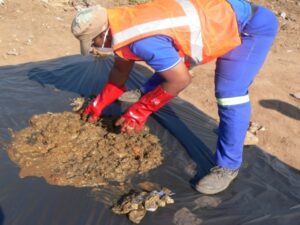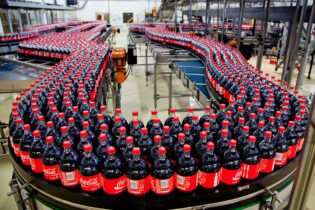A semi solid slurry produced from water treatment, wastewater treatment and onsite sanitation systems, sludge can be both a valuable by-product and a dangerous source of pollution.
“Sludge from onsite sanitation is collected from pit latrines, onsite digesters and septic tank systems (faecal sludge). With wastewater treatment plants (WTPs), there is sludge in the settling tanks (primary sludge), then there is sludge that has undergone biological treatments (secondary sludge or activated sludge) and sometimes there is even tertiary sludge from a further wastewater treatment step like adding a flocculation agent,” explains Santiago Septien, research engineer at the Water, Sanitation & Hygiene Research & Development (WASH R&D) Centre, University of KwaZulu-Natal. Pollution All sludges must be treated or disposed of in a way that will not be harmful to the environment or a threat to public health. Bacteria micro-organisms within the sludges can potentially contaminate groundwater and other water resources. “An example of the harmful effects of sludge contamination is cholera. In cholera-affected areas, sewage and faecal sludge need to be treated and managed carefully to stop the spread of this disease. Open defecation, release of untreated sewage, or dumping of faecal sludge from pit latrines or septic tanks into the environment need to be prevented. In many cholera-affected zones, there is a corresponding low degree of sludge management,” adds Septien. Sludges have high nutrient content that can cause excessive growth of algae and hyacinth when released in an uncontrolled manner into rivers and dams. High amounts of algae and hyacinth can cause other aquatic flora as well as fauna to die by depleting oxygen reserves in the water. “Some sludges also contain heavy metals, microplastics, pesticides and/or pharmaceuticals that can be highly toxic and may cause the contamination of soil, surface water and groundwater as well as crops and have a negative impact on living organisms, including animals and humans. Certain chemicals that can be found in sludges do not bio-degrade but accumulate, and are endocrine disruptors,” states Septien.Valuable resource
Due to the potential hazard that sludges can pose to humans and the environment, the processes used to treat, reuse and dispose of sludge is very important. “If managed correctly, sludges are a valuable resource, and have a multitude of uses,” states Septien. Some of the benefits include:- Nutrients found in sludges can be used as compost to grow crops.
- Sludges can also be prepared into an activated carbon that can hold water and nutrients, releasing them slowly for plants to absorb. The activated carbon also absorbs contaminants.
- The high carbon and organic content in sludges is also used for biogas – creating heat or renewable energy.
- Sludges can be carbonised and manufactured into briquettes – their high net calorific value and lower carbon dioxide emission factor makes them an ideal alternative fuel source in the cement industry.
- Manufacturing of building materials like bricks.
- Used as electrode material for high end capacitors
- To feed insects, such as the black soldier fly that is rich in protein and in turn is used to feed chickens or fish.







